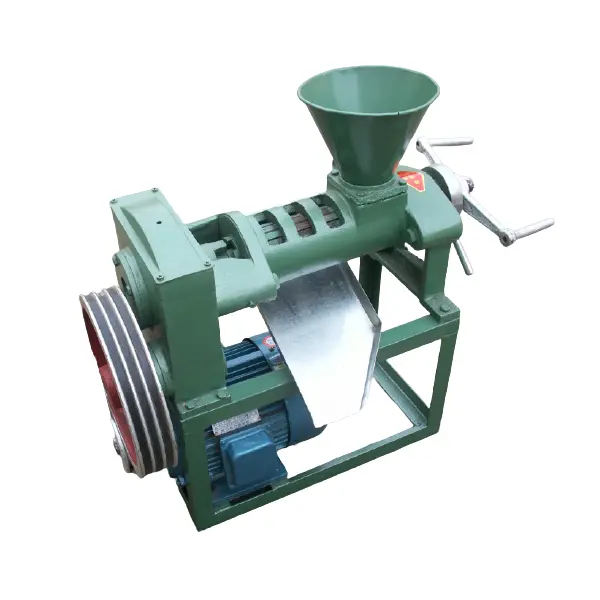অক্টো. . 13, 2024 18:25 Back to list
best flaxseed oil refining line
The Best Flaxseed Oil Refining Line A Comprehensive Guide
Flaxseed oil, known for its rich content of omega-3 fatty acids and various health benefits, has gained significant popularity in the health and wellness community. To meet the increasing demand for high-quality flaxseed oil, refining it properly is essential. This article delves into the best flaxseed oil refining line, exploring the processes, technologies, and best practices to ensure a premium product.
Understanding Flaxseed Oil Refining
Refining flaxseed oil is a crucial step to enhance its purity, flavor, and shelf life. The refining process typically involves several stages, including degumming, neutralization, bleaching, and deodorization. Each stage plays a significant role in removing impurities, such as phospholipids, free fatty acids, pigments, and off-flavors, resulting in a clear and neutral oil that retains essential nutrients.
1. Degumming This initial step involves the removal of phospholipids and other water-soluble impurities. Using hot water or an acid solution, the phospholipids hydrate, allowing them to separate from the oil. This process is vital as it prepares the oil for subsequent refining stages and helps prevent potential cloudiness in the final product.
2. Neutralization Here, free fatty acids are removed to reduce the oil’s acidity. An alkali solution, often sodium hydroxide (NaOH), is added to react with free fatty acids, forming soap that can be easily separated from the oil. This step not only improves the oil’s flavor and shelf life but also reduces the risk of rancidity.
3. Bleaching The bleaching process involves the use of adsorbent materials, such as activated clay or carbon, to remove color pigments and residual impurities from the oil. This step is crucial for achieving the aesthetic qualities that consumers expect from refined flaxseed oil. The oil is heated and filtered through these adsorbents to produce a light-colored, clear oil.
4. Deodorization In the final refining stage, the oil is subjected to steam distillation under vacuum conditions to remove volatile compounds that contribute to undesirable odors and flavors. This ensures that the flaxseed oil has a pleasant, neutral scent that appeals to consumers. Additionally, deodorization helps preserve the oil’s nutritional properties, extending its shelf life.
Choosing the Best Flaxseed Oil Refining Line
best flaxseed oil refining line

When selecting a flaxseed oil refining line, several factors should be considered to ensure efficiency and product quality
- Equipment Quality Invest in high-quality refining equipment that is designed for food-grade oils. Sturdy materials, efficient heat exchangers, and reliable filtration systems are essential for achieving optimal results.
- Automation and Control An automated refining line allows for precise control over the temperature, pressure, and chemical dosing. This enhances consistency in oil quality and reduces the risk of human error during processing.
- Energy Efficiency Choose a refining line that minimizes energy consumption while maximizing output. Energy-efficient equipment not only reduces operational costs but also has a lower environmental impact.
- Flexibility A versatile refining system can adapt to different process requirements, allowing manufacturers to scale production based on market demands and carry out various oil refining processes as needed.
- Regulatory Compliance Ensure that the refining line adheres to local and international food safety regulations. This guarantees that the final product is safe for consumption and meets industry standards.
Conclusion
In conclusion, setting up the best flaxseed oil refining line involves a comprehensive understanding of the refining process and the selection of appropriate equipment. By carefully navigating each refining step, manufacturers can produce high-quality, nutritious flaxseed oil that meets consumer demands. The popularity of flaxseed oil in both culinary and health markets suggests that investing in an efficient refining line is not only a necessity but also a lucrative opportunity for producers looking to capitalize on this superfood trend.
-
Top Food Oil Refined Unit Companies w/ GPT-4 Turbo Tech
NewsAug.01,2025
-
Premium Black Seed Oil Expeller - High Efficiency Cold Press Oil Machine
NewsJul.31,2025
-
Oil Processing Equipment - High-Efficiency Flaking Machine
NewsJul.25,2025
-
High-Efficiency Peanut Oil Refined Machine for Quality Oil Production Leading Exporters & Companies
NewsJul.08,2025
-
High Efficiency Sunflower Seed Oil Press – Leading Cooking Oil Press Machine Factories & Suppliers
NewsJul.08,2025
-
High-Efficiency Soybean Oil Press Machine – Leading Exporters & Reliable Companies
NewsJul.07,2025
